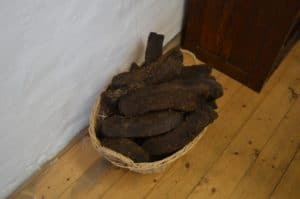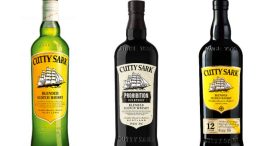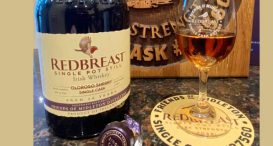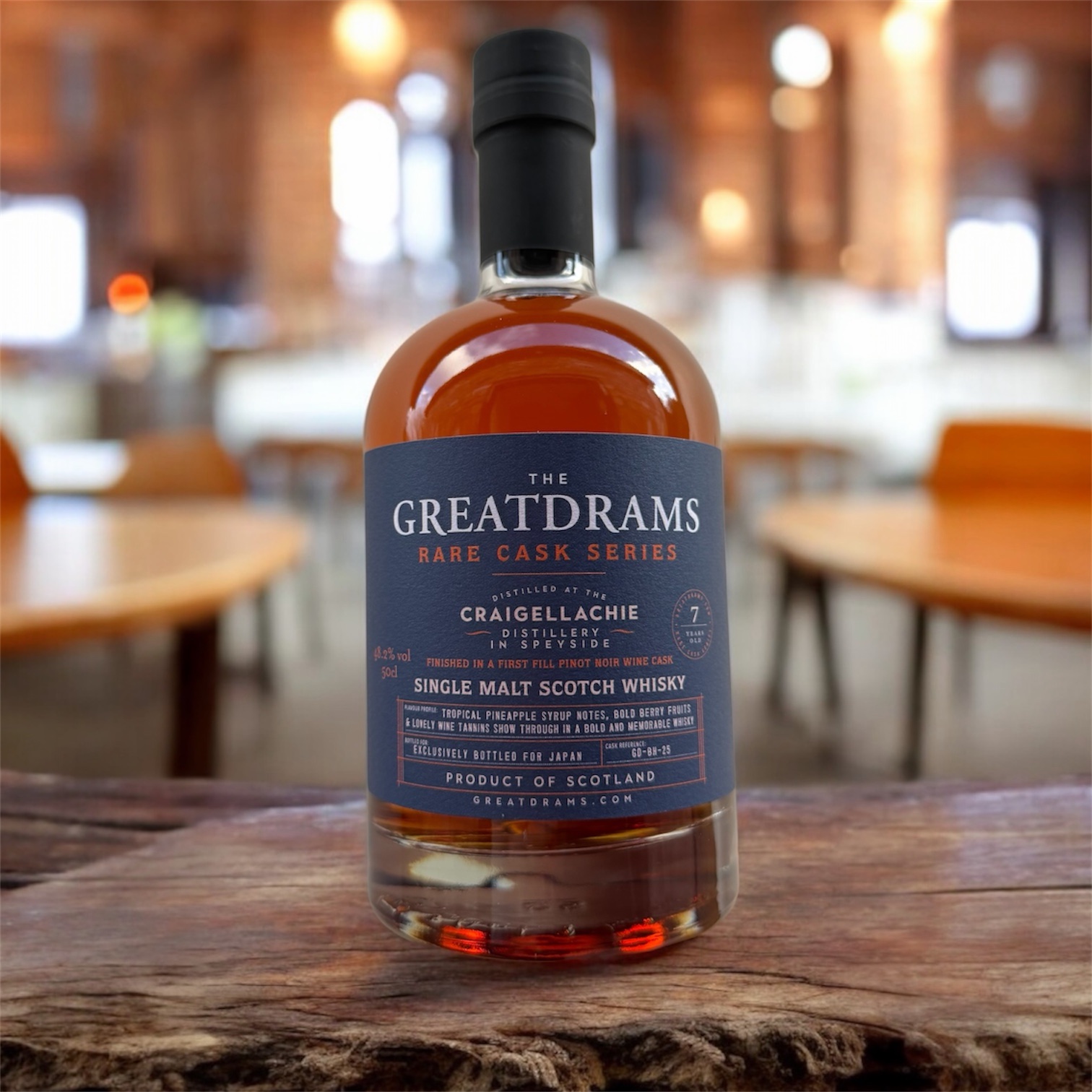Distillery Stories: Ardbeg
The story starts two hundred years ago on what was a barley farm. The farmer used to make five or six jugs of spirit a year for himself, his family and his farm hands to consume.
It was quite common for people on Islay to make spirit to be consumed on their land at this time then in 1803 the UK customs and excise folk raised a tax on spirit creation and prosecuted many of the islanders who refused to pay.
By this time there were around 23 distilleries on Islay.
A local by the name of John McDougall applied for a spirits license in 1815 to make aged spirit, whisky, legally and within twenty years their logged output was 2273 litres per year. The west malt barn that still stands today is the longest surviving building, dating back to 1850.
By 1887, Ardbeg’s distillery was producing 1.1million litres of spirit, making it the largest producer at the time, but their story then hit a series of roller coaster-style twists and turns which included the distillery being shut down for years at a time during recessions, between management takeovers and being closed for much of the 1980s.
Today there are seven distilleries on the coast of Islay.
This is mostly due to an old law dating back centuries that if you own your own pier you did not have to pay various taxes and could accept your own barley deliveries without charge (pre-Diageo’s maltings).
Right up until the 1970s, 95% of Islay single malt whisky was used for blending purposes.
The remaining 5% was kept back for what would become single malt, the Ardbeg name would not have been recognised at all at this time and for eight years, 1981 – 1989, when costs to import barley became too expensive and no one really noticed.
Between 1989 and 1996 the distillery, now under the control of Allied Distillers, only opened for two months per year to make enough stock to put into the market.
Then in 1996, everything changed.
Glenmorangie bought Ardbeg and existing aged stock for a grand total of £7million. This broke down thus:
£5.5million was for the aged stock, showing once again how incredible aged spirit is as an investment
£1.5million was for the distillery, land, brand and name
After refreshing the machinery, including the now 101-year-old Boby Mill that has been an incredible servant to the distillery over its lifetime, the distillery began producing spirit again in 1998.
On a tangent, the Boby Mill would take three weeks to replace should it break down (although there is no logged instance of this ever happening), the distillery builds redundancy into its operational budget each year in case it needs repairing but as it is doing such a good job, and looks so pretty, they are loathed to proactively change her.
Nowadays, for operational efficiency, Ardbeg buys its barley pre-peated from the Port Ellen Maltings, owned by Diageo and, when probed lightheartedly, Dougie was confident that Diageo don’t treat their own Islay brands (Lagavulin and Caol Ila) with any favouritism when it comes to the quality of barley that it sends out to the eight Islay single malts.

In case you are not familiar, the peatiness of whisky is measured in ‘parts per million’ (PPM) that indicates how much influence the peat has in the final product. As a guideline, here are the rough peat levels for popular whiskies:
Bunnahabhain – 1-2ppm
Bruichladdich – 3-4ppm
Springbank – 7-8ppm
Benromach – 8ppm
Ardmore – 10-15ppm
Highland Park – 20ppm
Bowmore – 26ppm
Talisker – 25-30ppm
Caol Ila – 30-35ppm
Ledaig – 35ppm
Lagavulin – 35-40ppm
Port Charlotte – 40ppm
Laphroaig – 40-43ppm
Ardbeg – 55ppm
Longrow – 55ppm
Octomore – 168ppm
[/column]
Dougie took us through how nothing in the process is wasted, for example; excess draft from the mashing part of the process is sold to farmers as feed for livestock and used water is pumped into the nearby water around their piers for sea life to feed on.
Ardbeg runs 16 mashes per weeks, using 72 tonnes of malt.
The Ardbeg washbacks remain wooden, made of Douglas fir, with each lasting around 45 years. For a washback to be replaced, the slats are sent over from the mainland and must be coopered by hand, a process that takes around six weeks to complete.
When I challenged Dougie on the use of wooden washbacks vs. stainless steel that Laphroaig and many other use, he informed me that whilst they are harder to clean, the natural bacterias that live within the wood gives a thicker was with a slightly soapier feel that he believes creates a better wash that, in turn, creates a better spirit later down the process.
Ardbeg only runs two stills, whereas Glenfiddich, Laphroaig, Ardmore et al all run six or more.
Detailed distilling facts.
The middle cut is the sweet spot for all distillers, this is the spirit that clocks in between 63% and 74% ABV, anything above that is called the hears and anything below that is called the tails. The heads and tails are ‘cut’ and redistilled until they hit that sweet spot.
The wash still takes the wash in at 8% ABV and distills the spirit to around 22%, the spirit still distills at 80ºC heat to create a spirit around 68% ABV.
Ardbeg has a proprietary part of their process that sends the lighter alcohol through a purifier to created a sweeter alcohol, the heavier alcohol then gets sent through the distilling process again to become lighter, and ultimately sweeter.
Ardbeg gets a lot less life out of their stills than other distilleries.
Each year the stills get an ultrasound to ensure there are no cracks, however small, then when it comes time to replace a still they buy new from the mainland.
The process to replace the still takes ten weeks and involves the entire roof being removed, the old still being taken out and the new one being put in.
The rough costs involved:
£350k for a new still
£250k for shipping and installation
£600k total, so quite an outlay!
Since re-entering production in 1998, the company has had someone employed to scour the auction sites buying up old bottlings of Ardbeg anonymously in order to bolster the old stock the distillery holds and to ensure that, when they redesign their visitor centre in the near future, they have an example of every expression they’ve ever produced.
We were told that whiskies with an ABV above 46% get taxed more so that’s why most distilleries bottle their core range at between 40% and 46% ABV to keep the cost of doing business down whilst not compromising their product. [Editor: This has since been proven to be incorrect information, apologies readers, thanks to Tom for pointing it out in the comments below].
Here’s a little insight into production differences and why there is additional costs involved in some cask finishes; ex-bourbon casks cost around £70-80 each whereas ex-sherry / oloroso casks cost around £800 each.
Ardbeg have a procedure in place that should the electricity fail for any reason on the island, which was more common in the 19th Century I’m sure than now, all staff are drilled on how to operate the distillery by hand so that production is not hit.
The distillery hit their target of 1.1million litres of spirit filled into casks last year by November so ceased production for the entirety of December and part of January to do three years’ worth of maintenance, upgrades and development way ahead of schedule.
You can watch my YouTube review below:
Subscribe to my YouTube Channel by clicking here













8 thoughts on “Distillery Stories: Ardbeg”
“We were told that whiskies with an ABV above 46% get taxed more so that’s why most distilleries bottle their core range at between 40% and 46% ABV to keep the cost of doing business down whilst not compromising their product.”
Whoever told you that is talking through their backend, the cost of DUTY is not in bands but for spirits is a set rate per 1litre of pure alcohol, so the following info shows what the cost of duty (and VAT on that duty would be) for some ABV’s at less than £1 more for the increase to 50% it’s a no brainer.
700 ml bottles info from http://www.wilson-drinks-report.com/duty-vat-calculator
40% – £7.74 duty and £1.55 VAT £9.30
46% – £8.91 duty and £1.78 VAT £10.69
50% – £9.68 duty and £1.94 VAT £11.62
55% – £10.65 duty and £2.13 VAT £12.78
60% – £11.62 duty and £2.32 VAT £13.95
The real reason for 40% or 46% is simply the fact it’s got more water in it which doesn’t cost in terms of duty, and means they can get more bottles per cask.
Cheers for clarifying Tom – strangely I wrote this article ages ago (mid-2014) but it got delayed due to other content going out and in that time did in fact learn the truth but neglected to update, appreciate your detailed response and the correction is noted in the article now. [slaps wrist].
i’ve heard this also from a few other people but it simply isn’t true, those naughty whisky company employees 🙂
It popped up on my twitter feed and i loved a read of it 🙂